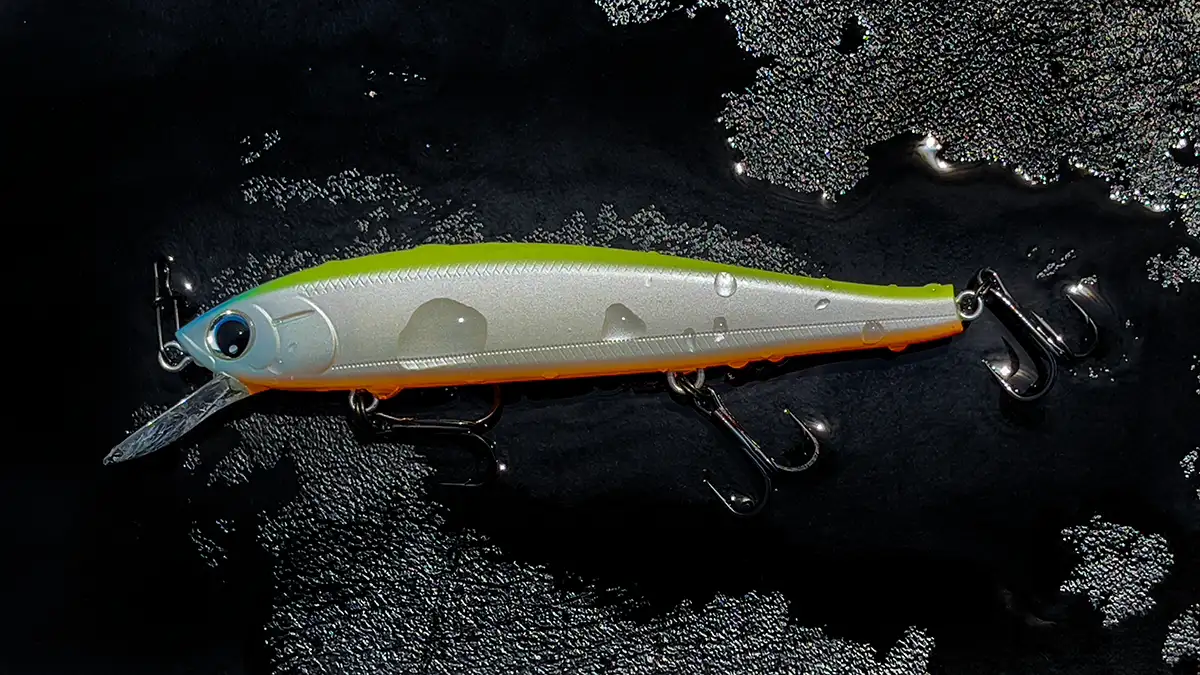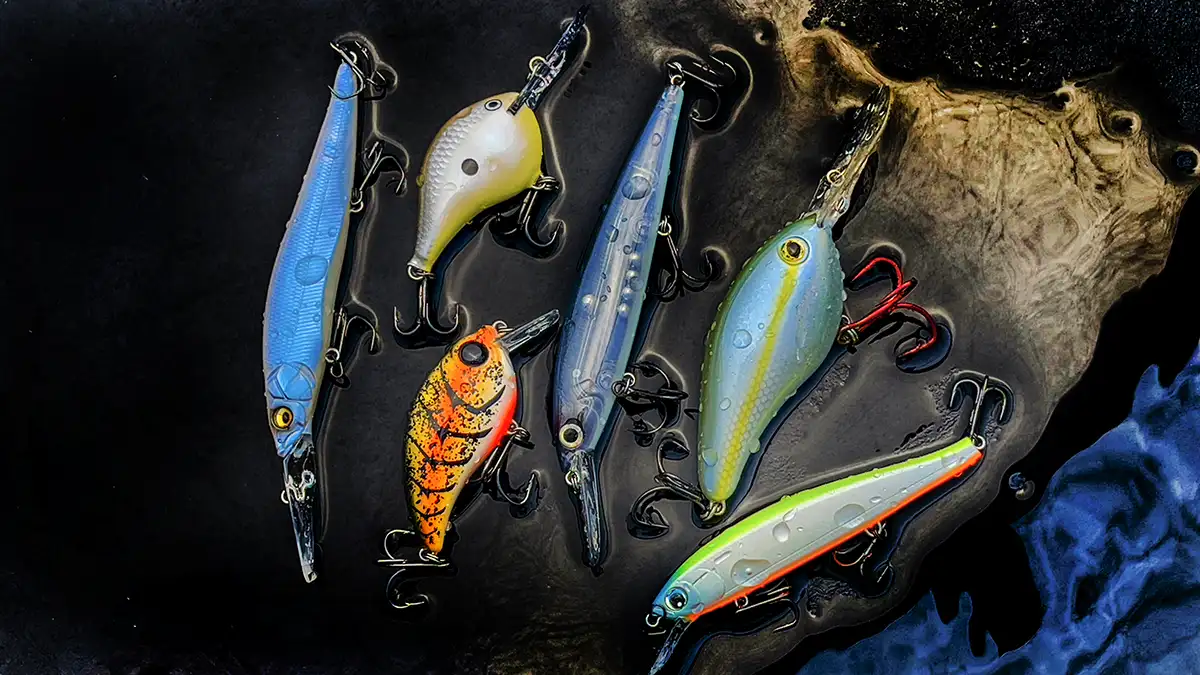We’ve been comparing popular fishing options in the hopes of helping anglers make better decisions on the water so more anglers have a good experience while fishing. Today we’re reviewing when to use a crankbait vs jerkbait when bass fishing. While there are a few similarities hopefully we can help anglers better understand where each is the better tool for the situations.
Differences between crankbaits and jerkbaits
While jerkbaits and crankbaits generally don’t look alike and they certainly appeal to bass in different ways at times, the also bear some similarities. Largely you can fish jerkbaits deep and shallow and they offer versions that fish various depths. Likewise you can find shallow deep and mid-depth crankbaits. And to an extent you can work a crankbait with a stop-and-go retrieve that bares some resemblance to the jerk-jerk-pause cadence when fishing a jerkbait.
But that’s really where the similarities end. To me a jerkbait is for when the bass are looking up and feeding up in the water column or maybe feeding in the middle of the water column. Where a crankbait is more suited to when a bass is feeding towards the bottom. Most crankbaits are designed to dive and dig and root around on the bottom trying to entice bass to strike while foraging down low.
Crankbaits are much rounder and have a steady side to side wiggle and wobble. While a jerkbait is mostly meant to be fished by jerking the bait and causing a much more random and erratic behavior. A crankbait is really fished with the reel. While a jerkbait is mostly fished with the rod.
Crankbait
We’ve covered bass fishing crankbaits at length on Wired2fish. And we have a lot of good resources to help you improve your crankbait fishing. Crankbaits can mimic shad, baitfish, bluegills, and crawfish. You fish a crankbait mostly with your reel. The rod is very important but it’s more about having a softer tip to absorb a fish strike on a steady quick retrieve of the reel with big treble hooks.
A crankbait can really fire up groups of fish. It can make a school turn competitive. The erratic fast action can often trigger fish in ways few other baits can. This is especially true in warmer waters. While jerkbaits are great when fish are lethargic. Crankbaits are great when fish are very active. Sure both can also work in the opposite situations. But generally speaking as waters warm crankbaits get better. As waters cool, jerkbaits get better. Or maybe just more effective. They become the better tools in these windows.
A crankbait lip will help it climb over cover and even come through cover like a square bill on wood.
Jerkbait
Jerkbaits mostly mimic longer, slender profile baitfish. They are fished with a snapping of the rod with an action imparted by the angler. They mostly suspend now. So you pull them down to their depth, snap the rod and jerk the bait along and it stays at that one level. Some of the newer ones sink slowly. Which to me is a preferred option. Especially in cold water.
One of the allures of a jerkbait is its ability to still entice fish while it’s not moving. While technically sinking or floating is moving, the bait is not moving forward and the fish has more time to react and take the bait. That’s what makes a jerkbait so effective in cold water. You can jerk the bait, show some flash and flare and then let it sit as fish slowly move to where it is.
Jerkbaits don’t do well with cover. So that’s something to be mindful of. Their lips will not help them climb over cover like a crankbait lip will.
Crankbait rod vs jerkbait rod
A good jerkbait rod has a quick tip that makes snapping the rod all day long easy to do. A good crankbait rod lets you see and feel the thump in your rod and usually has a much slower softer tip because you are working the bait with your reel. Now I have used a small jerkbait rod to throw small shallow crankbaits, especially baits like flat sides or small balsa crankbaits. Those little cranks fish well on jerkbait rod.
But as the crankbaits get larger, the less a jerkbait rod makes sense. A jerkbait rod is going to be made for fairly light baits and light line that snaps a lot from user input. A bigger crankbait rod has a slow parabolic bend with a slower tip and loads really well to launch a plug a long distance.
Lipless crank vs jerkbait
Lipless crankbaits can be fished a lot differently than traditional crankbaits. You can for sure just throw them out and reel them in. But they also are very effective fished really fast in shallow water or lifted and dropped in deeper water. They work well snatching out of grass. Sometimes this can appeal to bass as almost a more aggressive jerkbait type action. The bass are reacting to a quick action usually. So sometimes a lipless and jerkbait catch the same bass. So this is one place where there is some crossover to using both baits in the same locations.














